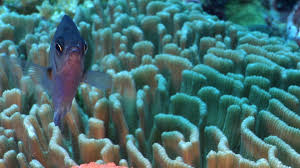The depiction of dragons in Chinese cinema has undergone a remarkable transformation with the advancement of CGI (Computer-Generated Imagery). Once limited by practical effects, puppetry, and hand-drawn animation, the visual representation of dragons has now reached new levels of realism and artistic expression. This evolution has not only enhanced the spectacle of fantasy films but also deepened cultural storytelling, allowing filmmakers to bring ancient myths to life in unprecedented ways.

The Traditional Portrayal of Dragons in Chinese Films
Before the widespread use of CGI, dragons in Chinese cinema were depicted using a combination of mechanical puppets, costumed performers, and hand-drawn animation. In classic Wuxia and fantasy films of the 20th century, dragons often appeared as painted illustrations in the sky, animated in a limited frame rate, or represented by large puppets manipulated by strings and smoke effects. These practical techniques, though imaginative, were constrained by physical limitations.
For example, the 1982 film The Legend of the White Snake used a mix of traditional animation and physical props to depict its dragon transformations. Similarly, in Journey to the West adaptations before the 2000s, dragon characters were either portrayed by actors in elaborate costumes or through stop-motion techniques. These representations were iconic but lacked the fluid movement and dynamic realism that modern audiences have come to expect.
The Advent of CGI and Its Impact on Dragon Imagery
The introduction of CGI in Chinese cinema marked a turning point in how dragons were visualized. One of the first major breakthroughs came with The Monkey King (2014), where CGI was extensively used to create a more dynamic and expressive dragon. Unlike previous films where dragons had rigid movements, the CGI version allowed for lifelike animations, intricate facial expressions, and seamless interactions with the environment.
In The Great Wall (2016), directed by Zhang Yimou, CGI was employed to create an army of monstrous dragon-like creatures known as the Tao Tie. These creatures moved in a highly coordinated and realistic manner, showcasing how CGI could be used to blend fantasy with cinematic realism. The film demonstrated how digital effects could bring ancient Chinese mythology into the realm of Hollywood-style visual storytelling.
Another significant milestone was Ne Zha (2019), an animated film that used cutting-edge CGI to redefine how dragons and divine beings were depicted. The film’s portrayal of the Dragon King and his son Ao Bing was visually stunning, with smooth animations, intricate scales, and highly expressive facial movements. The use of CGI in Ne Zha set a new standard for animated dragon imagery in Chinese cinema.
Modern Innovations in CGI Dragon Design
As technology advanced, so did the realism and detail in CGI-generated dragons. Modern films utilize techniques such as motion capture, particle simulations, and AI-driven rendering to create dragons that feel alive.
In Legend of the Demon Cat (2017), directed by Chen Kaige, CGI was used to craft mystical and visually complex creatures, including dragon-like spirits. The fluid motion of these entities demonstrated how modern CGI could be used to capture the ethereal beauty of traditional Chinese folklore.
Similarly, Jiang Ziya (2020), an animated film based on Chinese mythology, used CGI to craft elaborate dragon sequences that combined traditional Chinese artistic styles with modern visual effects. The dragons in the film retained classic Chinese aesthetics, with long, serpentine bodies and intricate patterns, but their movements were rendered with cinematic realism.
Cultural Symbolism and the Evolution of CGI Dragons
While CGI has made dragons more visually impressive, it has also played a role in preserving and modernizing cultural symbolism. In traditional Chinese mythology, dragons symbolize power, wisdom, and the forces of nature. Unlike Western dragons, which are often depicted as fire-breathing monsters, Chinese dragons are benevolent beings associated with rivers, rain, and imperial authority.
Modern CGI has allowed filmmakers to depict these mythological traits with greater accuracy. For instance, The Yin-Yang Master: Dream of Eternity (2020) utilized CGI to showcase a celestial dragon with luminous scales and a majestic presence, reinforcing the idea of dragons as divine creatures rather than mere beasts.
Additionally, CGI has enabled a fusion of ancient and futuristic aesthetics. In New Gods: Yang Jian (2022), the film’s dragons are designed with both mythical and sci-fi elements, reflecting the evolving visual language of Chinese fantasy films.
The Future of CGI Dragons in Chinese Cinema
As CGI technology continues to advance, the possibilities for dragon depictions in Chinese cinema are expanding. Future films will likely explore even more realistic textures, AI-enhanced animations, and interactive environments where CGI dragons seamlessly integrate with live-action actors.
Virtual reality (VR) and augmented reality (AR) are also expected to play a role in redefining dragon imagery. Future Chinese fantasy films may incorporate real-time CGI rendering, allowing audiences to experience dragons in an immersive and interactive way.
Moreover, with the global success of Chinese animated films like Ne Zha and White Snake (2019), the industry is increasingly investing in CGI-driven storytelling. The trend suggests that Chinese cinema will continue to push the boundaries of dragon depictions, merging tradition with technological innovation.
Conclusion
The evolution of CGI has revolutionized how dragons are portrayed in modern Chinese cinema. From rigid puppetry to fluid, hyper-realistic creatures, digital effects have allowed filmmakers to honor traditional mythology while elevating cinematic spectacle. As technology continues to progress, the role of CGI in shaping dragon imagery will only become more sophisticated, ensuring that these legendary beings remain at the heart of Chinese storytelling for generations to come.










